Months ago, when we were rebuilding the foundation wall of Glen Villa Inn, the huge resort hotel that once stood on our property, I began thinking of a new planting area to complement the new wall. A photo taken shortly after the hotel burned down in 1909 showed plants arranged around the low stone wall in front of the hotel, where horse-drawn carriages circled to pick up and drop off hotel guests.
The planting around that circular wall prompted me to consider a similar arrangement.
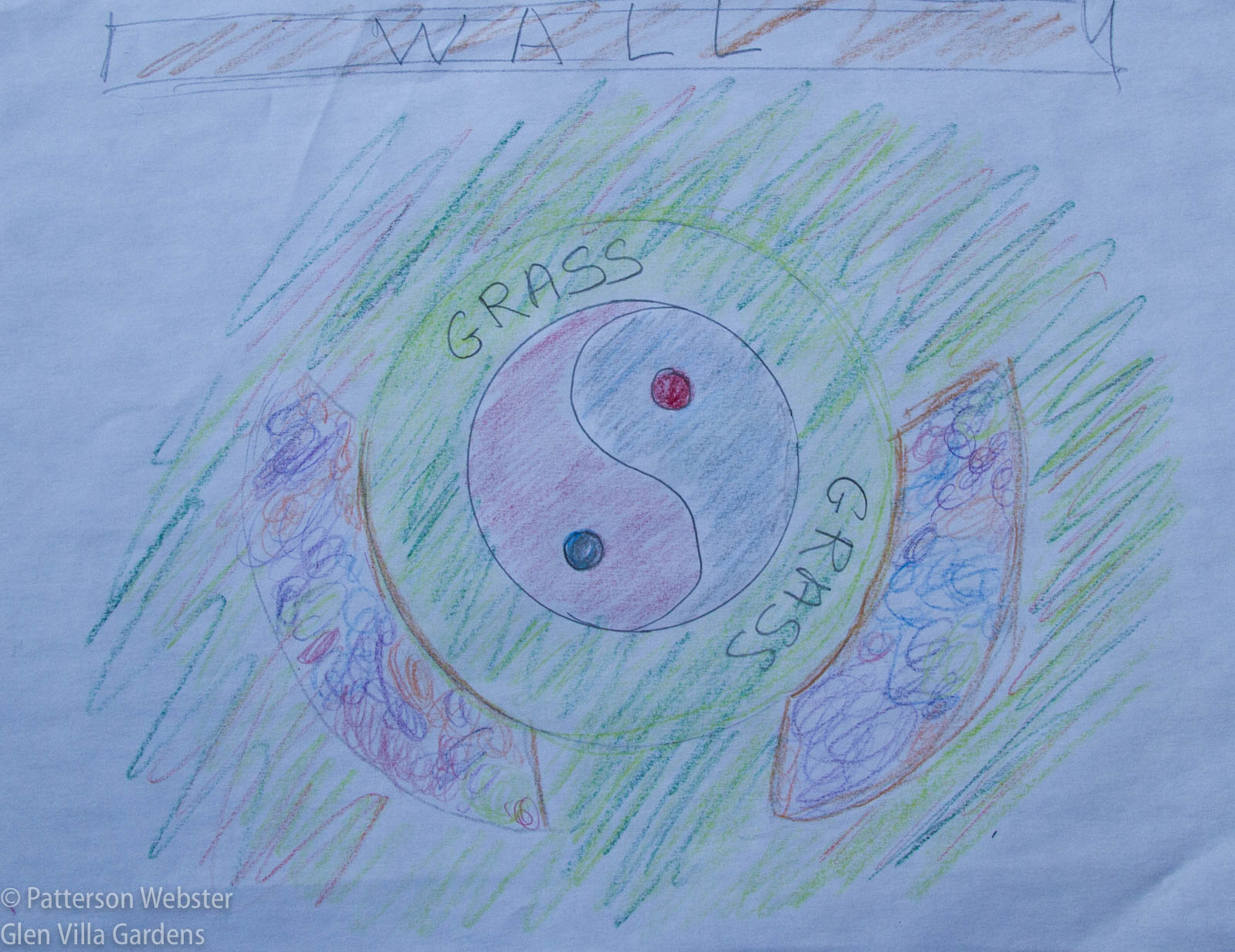
The grassy path around the stone circle would be about 10 feet wide and the planting beds roughly the same.
A partial wall coming out from the hotel foundation suggested creating a square to surround the circular wall which I designed a dozen or so years ago to represent the yin yang symbol.
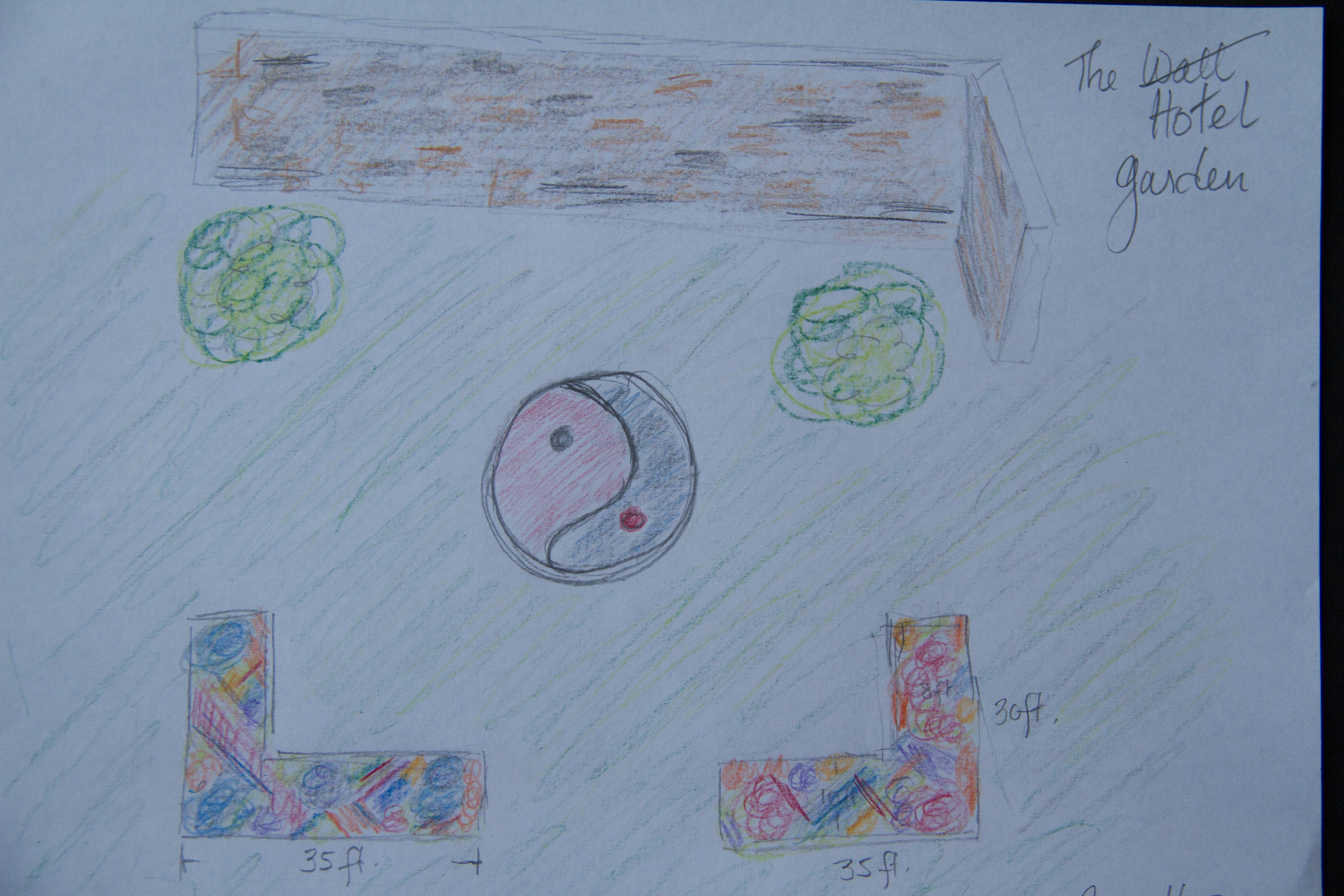
Another rough design idea.
An asphalt walkway leading from the lake to the front of the hotel suggested designing a long double herbaceous border to flank the asphalt path.

Another possibility?
In mid February I sat down with my old friend, the Montreal landscape architect Myke Hodgins, to consider these ideas. They’re fine, he said, but a bit static. Why not do something dramatic? It’s a big space, there’s room for a big gesture.
The idea appealed to me. But what kind of gesture?
I like conceptual gardens and regular readers will know that I often use the history of the site as a basis for design. What link could I make between a dramatic design and the history of the hotel? Myke and I threw ideas back and forth. Was there something about the boats that plied the waters of Lake Massawippi? One was called the Pocahontas, suggesting a link to my native Virginia. What about the fire that destroyed the hotel? Or the man who created it, G.A. LeBaron? He had purchased a farm in North Hatley and had created a housing development. He had a store in nearby Sherbrooke that sold pianos, organs and sewing machines — popular items that were on their way to replacing the buggies and buggy whips which he also sold. His entrepreneurial spirit was consistent with a big splashy design.
But what should it look like?
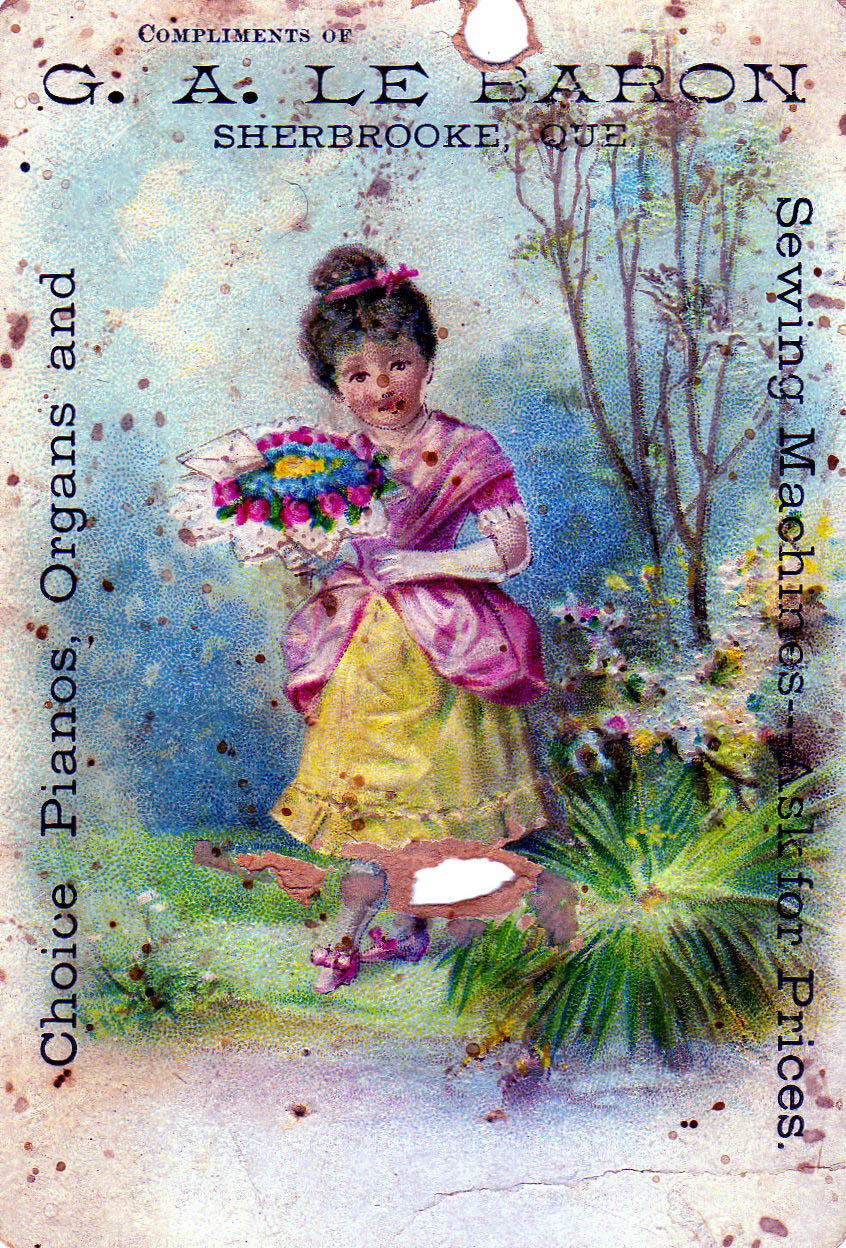
G.A. LeBaron knew that a pretty face attracted customers. This business card goes some way to explain why he was so successful.
It was Myke who came up with the idea that clicked: a design based on the guests who came north by train to stay at Glen Villa Inn to avoid the heat and humidity of the southern states where they lived year round. A garden oriented north-south would mimic their travel. And it would get the maximum sunlight, broadening the choice of plants I could use.
I liked the idea and immediately began to call the garden by its new name, the North South Garden. That orientation would form the basis of the design. But would it work on site?
In late February, when snow was still deep on the ground, Jacques and I went out with a compass to see where a north-south line would run and staked out a possible placement.

Staking out the ground wasn’t easy when you sank up to mid calf at every step. And this orientation turned out to be totally wrong.
As the snow melted, we corrected the orientation and considered the placement from every angle: from the house, from the driveway and from the top of the hotel foundation wall.
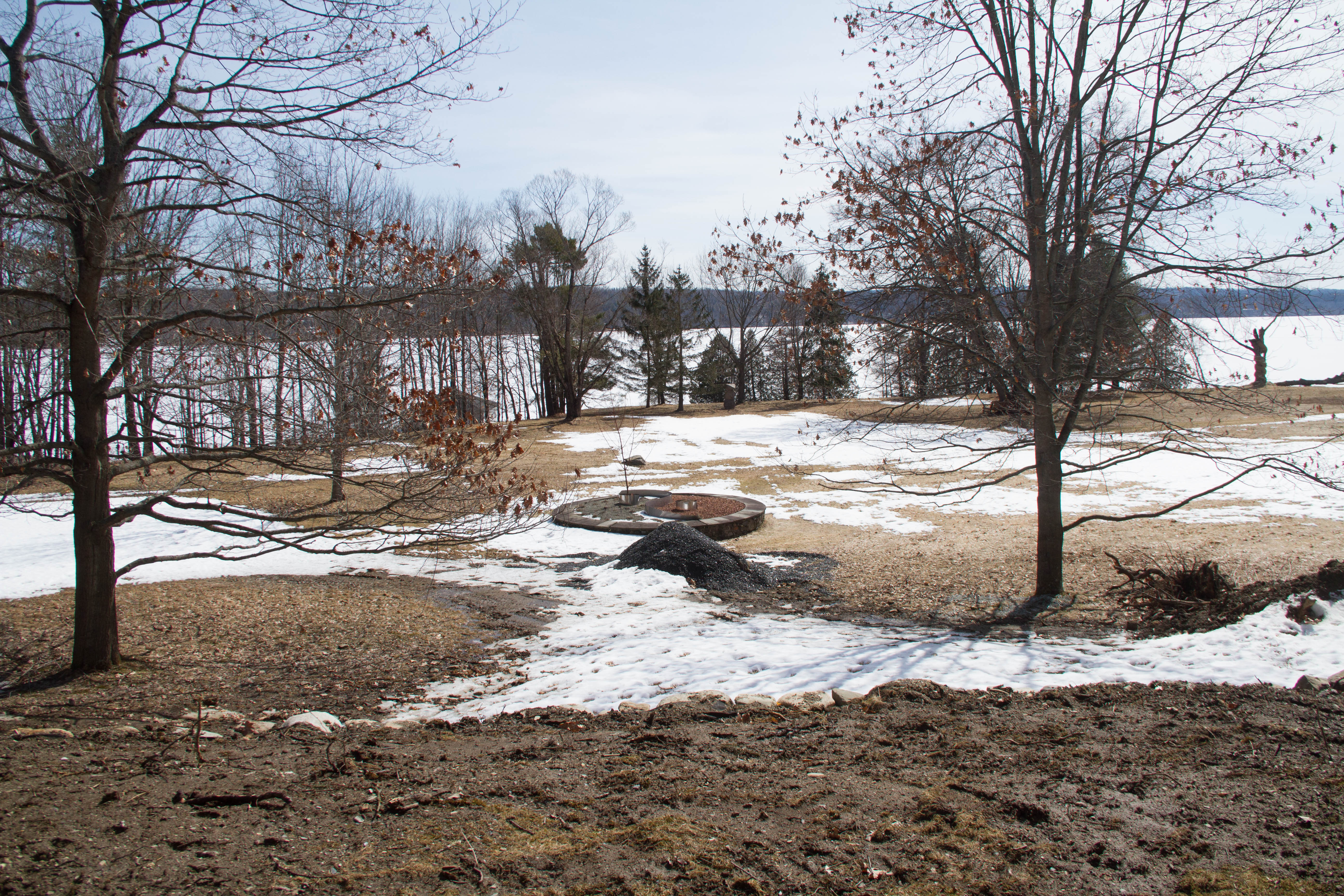
The asphalt path runs towards the lake, starting at the big rock barely visible beyond the circular wall.
As spring approached, I sketched out possible dimensions. How long could the North South Garden be? How wide? How should it end? I thought of the compass needle marking north and in a flash, the straight line acquired arrow points, first at the north end only, then at both north and south ends. Those points gave the garden its final name: the North South Arrow.

With a shape and tentative dimensions in mind, I began to focus on the choice of plants. I knew I wanted them to reflect the idea of north and south. That suggested hot colours in the south shifting gradually towards cool colours in the north. The southern plants that immediately sprang to mind included boxwood, a staple of many southern gardens, and sweet smelling plants — lilacs and mock oranges that reminded me of grandmothers, perspiring just enough to set off the smell of their face powder. Plants for the north were less obvious. Cooler colours might include silvery greys but colours could also be darker to echo the north’s shorter days and longer nights.
Were these stereotypes? Of course they were. And for all the turns my imagination could take, the most important consideration remained the deer. I didn’t want to fence the Arrow so every plant I chose had to be deer-proof, or as deer-resistant as possible.
Gradually I developed a list of possible plants, focused around two relatively new varieties of spirea, Spirea Double Play Big Bang and Spirea Double Play Blue Kazoo. Along with the small green leaves of boxwood, I envisioned touches of dark-leafed shrubs, plants like Diervilla ‘Nightglow’ and the feathery elderberry, Sambucus ‘Black Lace.’ Perennials for consideration included baptisia, echinacea, helenium, Russian sage and Achillea, all in a mix of shades of blue and sparks of fiery orange. Ornamental grasses were also a possibility.
In May we marked out the arrow on site and, based on practical considerations, determined the dimensions: a bed 15 feet wide and 110 feet long, with wider triangular arrowheads at both ends.
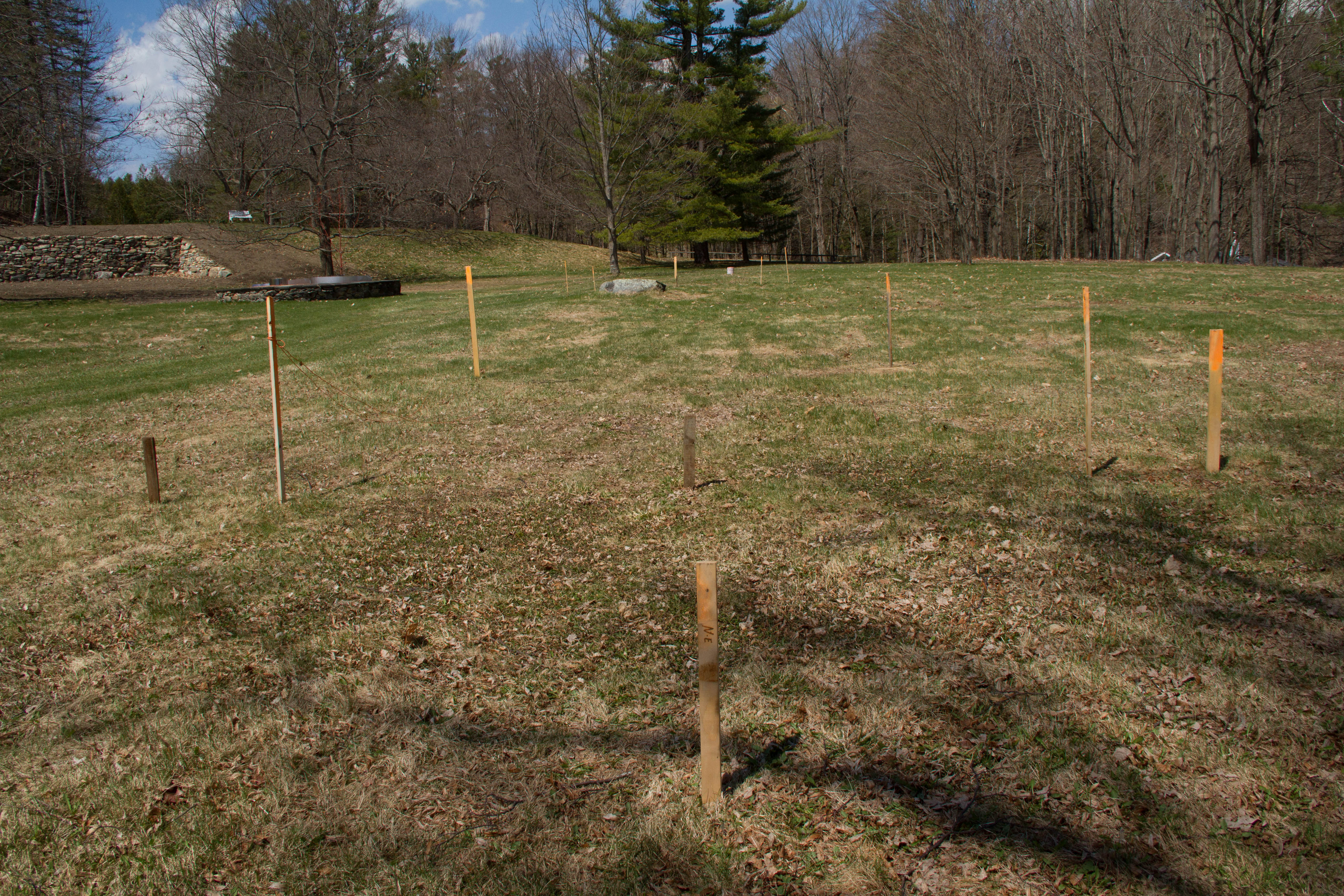
The next steps included finalizing the choice of plants and preparing the ground for planting. I’ll continue that story in my next post.
In the meantime, here’s a glimpse of what’s to come!
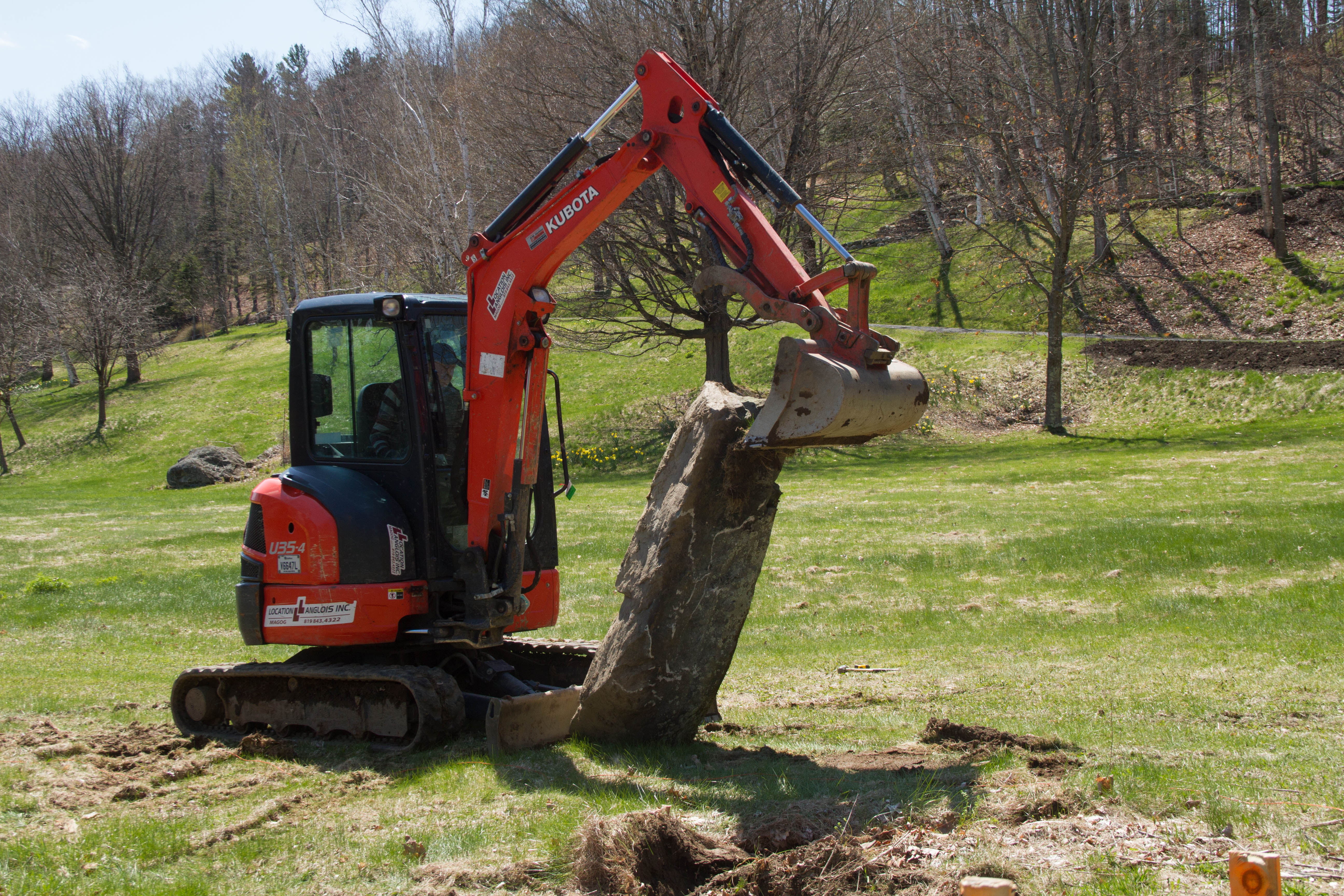






Great to be adding a new feature and one that comes with your usual imagination and flair. I have found it terribly hard to establish new plantings – I do hope you find it easier, but let me know if you get to needing cheering up and encouraging. Challenging stuff, this garden making and you’ll get there. Time is the biggest problem for me – perennials (and shrubs) take a long time to establish and reach full size. This (pic) is begining to give me hope this year. Xxxx
Deer ate one of the shrubs they were not supposed to like, appropriately named Diervilla. So far they have left everything else alone. But it will take half a dozen years or more for this planting to come into its own. If it ever does.
Deer and rabbits and slugs and snails and many other things are never restricted in their appetite to try new things. Never trust anyone who tells you different!
And yet I keep hoping the deer can read.
You wouldn’t like their response if they could!
What a project! It is interesting to be privy to your thought processes as you developed the idea for this new garden. Like you, I can’t wait to see how it turns out!
It’s been so much fun to plan this out… a true break from all the Covid horrors.
Connective history, determined through imagination, thoughtfulness and consultation, it’s one nice plan!
I’m privileged to be on this journey, if only visually. Count me as looking northward for what I know will be
splendid execution.
Mel, what a thoughtful comment. One of the stories about the southerners who came up to Glen Villa says that they pulled the blinds down as soon as the boarded the train so they didn’t even have to look out at the north! A nice story, probably not true, but fun to think about.
Connective history, determined through imagination, thoughtfulness and consultation, it’s one nice plan!
I’m privileged to be on this journey, if only visually. Count me as looking northward for what I know will be
splendid execution.